 by "ttyymmnn" (ttyymmnn)
by "ttyymmnn" (ttyymmnn)
Published 08/25/2017 at 12:35
 by "ttyymmnn" (ttyymmnn)
by "ttyymmnn" (ttyymmnn)
Published 08/25/2017 at 12:35
Tags: Planelopnik
; planelopnik history
STARS: 9
Welcome to This Date in Aviation History , highlighting milestones, important historical events and people in aviation and spaceflight from August 23 through August 25.
!!! UNKNOWN CONTENT TYPE !!!
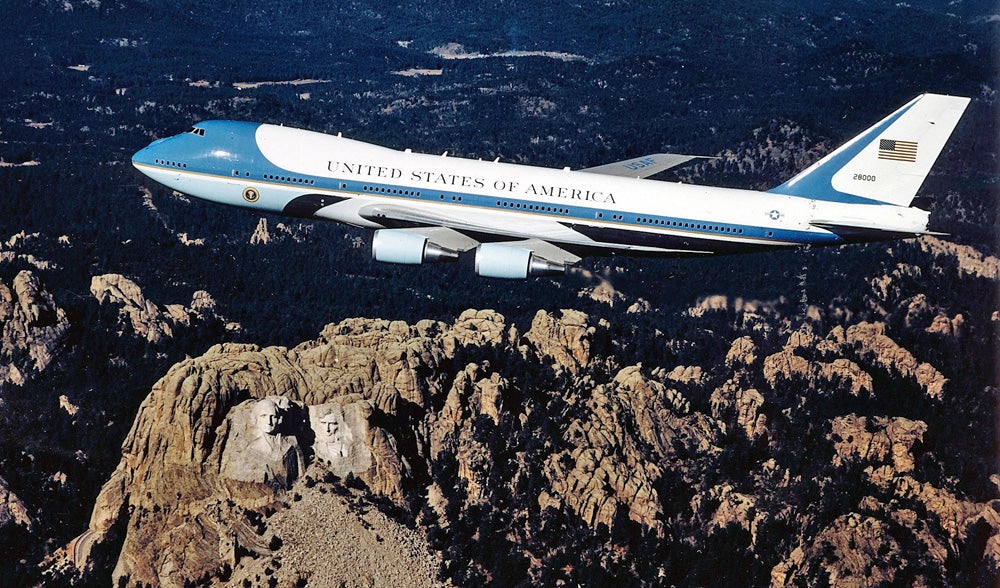
August 23, 1990 – The Boeing VC-25, better known as Air Force One when transporting the President of the United States, enters service. Aircraft that transport world leaders around the world have become an important symbol of national power, pride, and technological prowess. In 1959, Soviet leader Nikita Khrushchev arrived in the US in a Tupolev Tu-114 , a huge 4-engine turboprop airliner, and his arrival caused quite a stir among the Western press. The history of American presidential air transport began more out of necessity than propaganda, but the modern symbolism of the US President arriving on a large airliner, decked out in the iconic United States livery designed by Raymond Loewy , has since become an important part of showing the US flag in foreign countries. American presidential aviation dates back to 1945, when President Franklin Roosevelt flew on a Douglas C-54 Skymaster , named the Sacred Cow , to attend the Yalta Conference . Later, President Harry Truman flew in a Douglas DC-6 (VC-118 Liftmaster) named Independence , and President Eisenhower had Columbine II and Columbine III , both Lockheed VC-121 Constellations . It was during Eisenhower’s administration that the name “Air Force One” came into use, a call sign created in 1953 to indicate any Air Force aircraft that is carrying the president to differentiate it from other civilian aircraft (if the president is flying in a civilian aircraft, the call sign becomes Executive One). President Dwight Eisenhower brought presidential aviation into the jet age when he ordered three VC-137 aircraft, based on the Boeing 707 , and that aircraft served all the following presidents through Ronald Reagan . But the Air Force One we know today from the TV news and in movies , a Boeing 747-200B (Air Force designation VC-25) didn’t start serving the president until September 1990. In 1985, the Air Force started looking for a replacement for the aging VC-137s currently in service. The new aircraft was required to have at least three engines for added safety and be capable of flying 6,000 miles without refueling. The only two aircraft that fit those criteria were the Boeing 747 and the McDonnell Douglas DC-10 , and the Air Force eventually chose the 747. President Reagan ordered two aircraft (which were given tail numbers 28000 and 29000), and rather than modify existing airliners, construction began on two purpose-built aircraft, with interiors designed by First Lady Nancy Reagan . The first VC-25 took its maiden flight on May 16, 1987, but the first aircraft wasn’t delivered until 1990 during the first administration of George H. W. Bush .
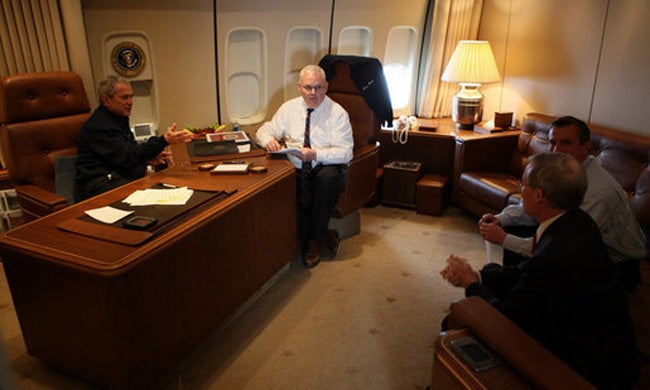
Inside, the VC-25 features a suite of offices and sleeping quarters for the president, as well as other meeting rooms and quarters for the staff. There is also a medical suite, with an operating table, staffed by a doctor and nurse. In addition to transporting the president, Air Force One can also function as a flying military command center in the event of war or other national emergency and, following the
terrorist attacks
of September 11, 2001, the VC-25 was modified to give the President the ability to speak to the entire nation from the air. The VC-25 also has the capability for aerial refueling and is armed with classified anti-aircraft missile countermeasures, though, as popularly shown in the movie
Air Force One
, it does not have a rear cargo ramp. Plans are already in the works for a replacement to the current VC-25, with the Air Force developing a newer
Boeing 747-8
which is scheduled to begin operation in 2022.
(US Air Force Photos)
!!! UNKNOWN CONTENT TYPE !!!

August 23, 1954 – The first flight of the Lockheed C-130 Hercules. The C-13o, in all of its myriad variants, has become a ubiquitous transport and logistics aircraft for the United States military and many partner countries, and has seen action from the Vietnam War to the conflicts of the present day. It has become a true workhorse, tackling jobs from troop transport to logistical support to counterinsurgency to reconnaissance, and also exists in gunship variants and as an electronic spy and propaganda platform. The Hercules traces its origin back to 1951, when US Air Force decided to acquire a new turboprop transport for the Military Air Transport Service (MATS), which later became the Military Airlift Command (MAC), when the demands of the Korean War showed that the WWII-era piston-powered airlifters were not up to the task of supplying the troops in the field and were unsuited to modern logistical requirements. But rather than develop a new freighter from an existing aircraft, as they had done in the past, the Air Force requirements called for a completely new plane designed from the wheels up as a heavy lifter. The request from the Air Force led to the creation of the C-130, the Douglas C-132 (later canceled before any prototypes were built), and the Douglas C-133 Cargomaster , a plane of similar design yet much larger and built in significantly fewer numbers. The Air Force settled on the C-130, which was powered by four Allison T56 turboprop engines designed specifically for the Hercules, engines that gave the plane a greater operating range than thirsty turbojet engines and allowed the C-130 to operate from rough, unimproved and shorter runways. They also allowed the Hercules to be fully operational with only three engines.
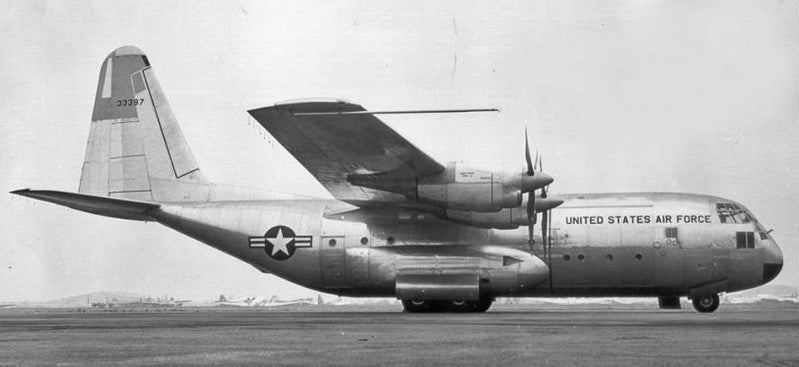
The Hercules set a new standard for modern airlift aircraft design, with a fully pressurized cabin and unprecedented range and capability. The high wing and external landing gear pods allowed for copious internal cargo space, and a rear cargo door allowed pallets and vehicles to be driven directly on board, with a low deck for ease of loading. After the successful flight of the two prototypes, an initial production contract was awarded in July 1951, and production of the Hercules continues to this day. The C-130 entered service with the US Air Force in 1956, followed by Australia in 1958. The Hercules flew its first combat missions in Vietnam in 1964, and has served in every theater of war since. In 1963, a Hercules set the record for the largest aircraft to land and take off from an aircraft carrier when it carried out trials aboard USS
Forrestal
, a record it holds to this day. The basic design has led to a more than 40 variants with upgraded engines and avionics for a host of different mission profiles, both military and civilian, including a gunship version, the
AC-130
, which is armed with miniguns and cannons for support of ground troops. It all started with the C-130A, and Lockheed is now producing the
C-130J Super Hercules
, with the most powerful engines yet, a glass cockpit and modern flight deck. Over 2,500 Herks have been produced, and this 50-year-old design shows no sign of being retired any time soon.
(US Air Force Photos)
!!! UNKNOWN CONTENT TYPE !!!
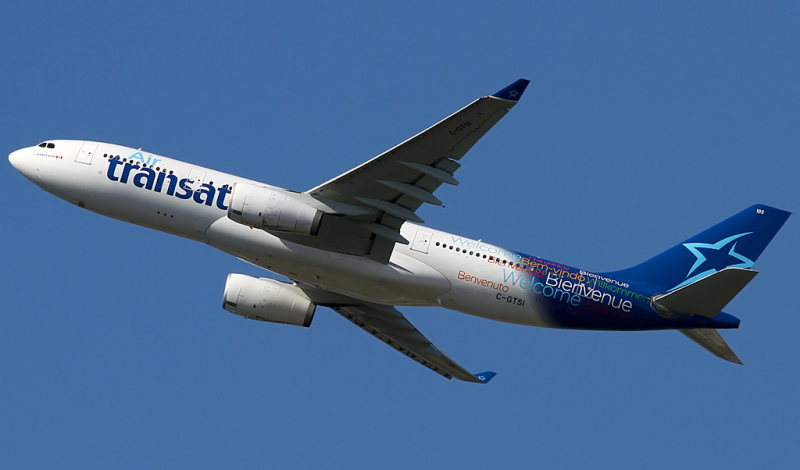
August 24, 2001 – Air Transat Flight 236 runs out of fuel over the Atlantic Ocean and glides to a landing in the Azores. Flying across the great expanses of the open ocean has always been a risky proposition. Should an emergency arise, it’s likely that the aircraft is too far away from a safe landing spot and, for that reason, transoceanic flying boats plied the long overwater routes in the early days of transoceanic flight. Following the flying boat era, transoceanic flights were restricted to airliners with more than two engines for added insurance, until new regulations, known as ETOPS , recognized the reliability of modern jet engines. But even an engine that is reliable enough for flights between continents requires fuel to run. But it goes without saying that rigorous calculations are required to prevent an aircraft from running out of fuel, calculations that also include extra fuel to allow for holding patterns and diversions to different airfields. But if those calculations are done incorrectly, an airliner can become starved of fuel and turn into a giant glider, as happened famously in 1983 to an Air Canada flight known as the Gimli Glider . In that case, crews simply didn’t put a sufficient amount of fuel onboard the airliner. But undetected mechanical faults can also lead to fuel starvation, and the middle of the Atlantic Ocean is a terrible place see your fuel gauge reading empty. Air Transat Flight 236 was an Airbus A330-200 (C-GITS) flying from Toronto, Canada to Lisbon, Portugal. The flight, carrying 293 passengers and 13 crew, took off without incident, but a little more than 4 hours into the flight, the flight deck crew received a warning for low oil temperature and high oil pressure in the Number 2 Rolls-Royce Trent engine. Twenty minutes later, they received a warning for fuel imbalance, and the they responded by transferring fuel from the left wing tank to the right wing tank, which was nearly empty. What the crew did not know was that a fuel leak had caused the imbalance, and the fuel transfer caused the remaining fuel to flow through the leaking fuel line and drain out at roughly one gallon per second. The pilots declared a fuel emergency and decided to divert to Lajes Air Base in the Azores , which lies in the Atlantic Ocean 850 miles west of Portugal. Within ten minutes, and still far from Lajes, both engines flamed out, and the Airbus lost all primary electrical power, as well as its main hydraulic power. The captain of the flight, Robert Piché , an experienced glider pilot, put all his gliding skills to use as he and First Officer Dirk de Jager worked to control the powerless plane with minimal controls. Their skill kept the plane in the air for 19 minutes, covering roughly 75 miles, the longest distance ever flown by an unpowered passenger jet. Military air traffic controllers at Lajes guided the plane to the runway, and the plane touched down at a speed of 200 knots, resulting in a fire in the braking system that caused the loss of all 8 main wheels.
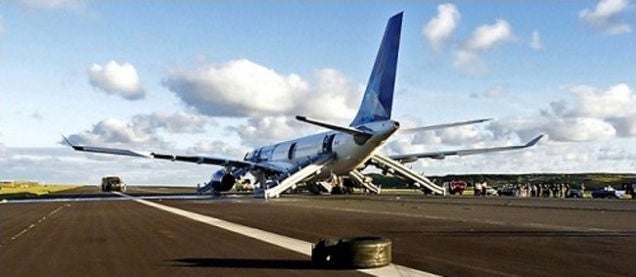
Fourteen passengers and two crew members received minor injuries during the evacuation, and two passengers were seriously hurt, and the plane experienced damage to the landing gear and lower fuselage. Investigators traced the cause of the leak in the No. 2 engine to an incorrect part being installed in the hydraulics system by Air Transat maintenance staff, and though pilot error was also listed for the crew’s failure to identify the fuel leak, Captain Piché was awarded the
Superior Airmanship Award
by the Air Line Pilots Association. The French aeronautics board also issued a directive leading to a revision in the flight manual to prevent future incidents.
(Photo—not accident aircraft—by Konstantin von Wedelstaedt via
Wikimedia Commons
; second photo author unknown)
!!! UNKNOWN CONTENT TYPE !!!
!!! UNKNOWN CONTENT TYPE !!!
!!! UNKNOWN CONTENT TYPE !!!

August 23, 1977 – The MacReady Gossamer Condor wins the first Kremer prize for human-powered flight.
The
Kremer prize
was established in 1959 by industrialist Henry Kremer to award pioneers in the realm of human-powered flight. To claim the £50,000 prize, an aircraft had to complete a figure-eight course of one mile while crossing over a ten-foot pole placed at the beginning and the end of the course. The
Condor
, designed by aeronautical engineer
Paul MacCready
, was constructed of aluminum poles covered in lightweight plastic, with a gondola underneath housing the pilot and was fitted with a forward
canard
for control. Amateur bicyclist and hang glider pilot
Bryan Allen
flew the Condor on its prize-winning flight at at Minter Field in Shafter, California. MacCready followed up with the larger
Gossamer Albatros
, which crossed the English Channel in 1979.
(Photo via
Minter Airfield Museum
)
!!! UNKNOWN CONTENT TYPE !!!
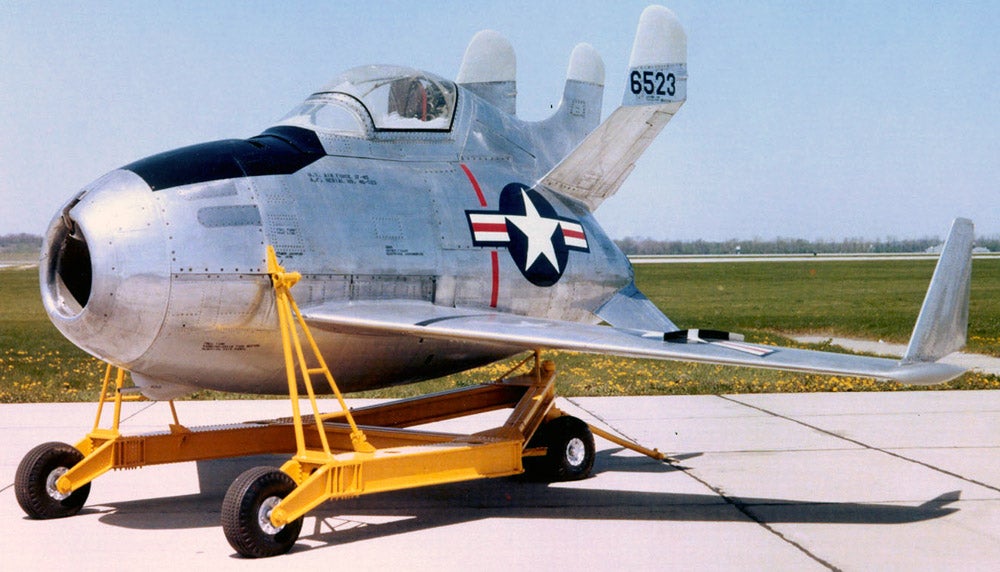
August 23, 1948 – The first flight of the McDonnell XF-85 Goblin. In the early days of transoceanic bombers, fighters were incapable of flying with the bombers on their extended missions. Parasite fighters , first developed to be launched from Zeppelins during WWII, seemed to be the solution, with the fighters carried by a host bomber and released if needed. The diminutive Goblin was designed to be carried by a Convair B-36 Peacemaker and was powered by a single Westinghouse J34 turbojet engine. Though flight tests demonstrated that the Goblin flew well, its performance was inferior to contemporary fighter aircraft. Combined with the development of reliable aerial refueling procedures, the Goblin was canceled in 1949 after the production of two prototypes. (US Air Force photo)
!!! UNKNOWN CONTENT TYPE !!!
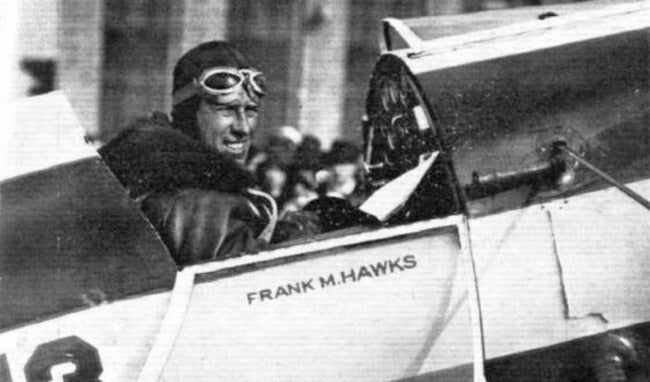
August 23, 1938 – The death of Frank Hawks. Born on March 28, 1897, Hawks served as a flight instructor during WWI and went on to perform as a barnstormer after the war. During the Golden Age of Flight in the 1930s, Hawks made a name for himself as a demonstration pilot and racer, famously flying a series of aircraft sponsored by oil company Texaco and setting no less than 214 point-to-point records in the US and Europe. He also starred in the 1937 movie serial The Mysterious Pilot , where he was billed as “The Fastest Man Alive.” After his retirement from competitive flying in 1937, Hawks became the vice president of the Gwinn Aircar Company, where he marketed the company’s novel aircraft. Having ominously predicted that he would die in an airplane, Hawks was killed in the crash of a Gwinn Aircar in East Aurora, New York. (Photo author unknown)
!!! UNKNOWN CONTENT TYPE !!!
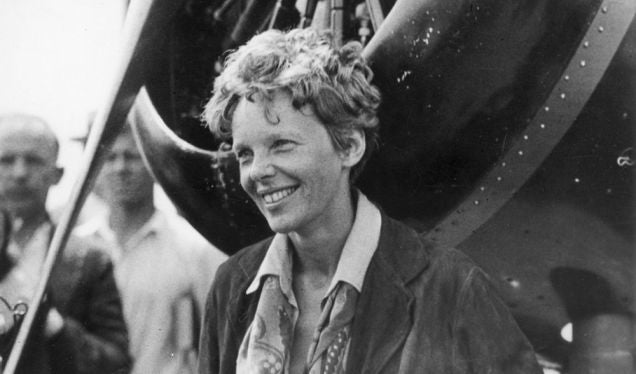
August 24, 1932 – Amelia Earhart becomes the first woman to fly nonstop across the United States.
Amelia Earhart is America’s best known aviatrix, and she set many flying records for her day and achieved many firsts for female pilots. Perhaps her greatest feat was her solo flight across the Atlantic Ocean on May 20-21, 1932, but she followed that just three months later with another first, becoming the the first woman to fly nonstop across the United States. In doing so, she also set a new transcontinental speed record in her
Lockheed Vega 5B
, completing the 2,448 mile journey in 19 hours 5 minutes, a record she would break the following year. Earhart, along with navigator Fred Noonan, disappeared on July 2, 1937 while attempting to fly around the world.
(Photo via
Encyclopedia Britannica
)
!!! UNKNOWN CONTENT TYPE !!!
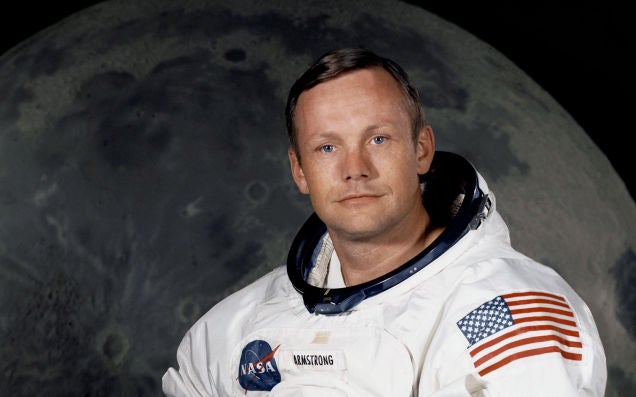
August 25, 2012 – The death of Neil Armstrong,
an aerospace engineer, combat pilot, test pilot, astronaut, and the first man to set foot on the Moon. Armstrong was born on August 5, 1930 in Wapakoneta, Ohio and, after serving as a fighter pilot in Korea, he received a degree in engineering from Purdue University. Following a stint as a test pilot, Armstrong joined the
NASA Astronaut Corps
in 1962 and became the first American civilian to fly in space when he served as command pilot for
Gemini 8
. His second and final spaceflight took place in July 1969 when he commanded
Apollo 11
, becoming the first man to walk on the Moon. Armstrong retired from NASA following that flight, and became a college professor and businessman before his death at age 82.
(NASA photo)
!!! UNKNOWN CONTENT TYPE !!!

August 25, 1995 – The first flight of the Airbus A319,
a narrow-body, short-to-medium-range airliner that was developed from the
Airbus A320
. The A319, a shorter version of the A320, was developed based on a request by
Steven F. Udvar-Házy
of
International Lease Finance Corporation
(IFLC), and was intended to provide direct competition to the
Boeing 737
. Though it carries slightly fewer passengers than the A320, it has the same fuel capacity, thus the range is extended up to 3,700 nautical miles with the addition
winglets
(called
Sharklets
by Airbus). Just under 1,500 A319s have been produced, and it is in service with over 100 operators worldwide.
(Photo by the author)
!!! UNKNOWN CONTENT TYPE !!!
!!! UNKNOWN CONTENT TYPE !!!
!!! UNKNOWN CONTENT TYPE !!!
!!! UNKNOWN CONTENT TYPE !!!
!!! UNKNOWN CONTENT TYPE !!!
!!! UNKNOWN CONTENT TYPE !!!
!!! UNKNOWN CONTENT TYPE !!!
If you enjoy these Aviation History posts, please let me know in the comments. And if you missed any of the past articles, you can find them all at Planelopnik History . You can also find more stories about aviation and aviators at Wingspan and Planes You’ve (Probably) Never Heard Of .
!!! UNKNOWN CONTENT TYPE !!!

08/25/2017 at 12:55, STARS: 1
Minor quibbles: The 747-8-based AF1s (I can’t believe we still don’t have a VC designation for them yet) aren’t expected to fly until 2022 .
The XF-85 may have been an okay flyer, but hooking up with the B-36 mothership was a nightmare:
After three attempts to hook onto the trapeze, Schoch miscalculated his approach and struck the trapeze so violently that the canopy was smashed and ripped free and his helmet and mask were torn off.
The two Goblins flew seven times, with a total flight time of 2 hours and 19 minutes with only three of the free flights ending in a successful hookup.
Finally, C-130 carrier ops!
!!! UNKNOWN CONTENT TYPE !!!

 "Chariotoflove" (chariotoflove)
"Chariotoflove" (chariotoflove)
08/25/2017 at 12:56, STARS: 0
if the president is flying in a civilian aircraft, the call sign becomes Executive One
When does (has) this ever happened?
 "ttyymmnn" (ttyymmnn)
"ttyymmnn" (ttyymmnn)
08/25/2017 at 13:00, STARS: 1
Most of what you are reading was actually written a year ago and then edited for today’s post. I try to keep up with the shifting delivery dates (I had to change the delivery date for the KC-46 for a post next month), so I probably just missed this. Thanks for pointing it out.
Love the C-130 on the carrier. That’s some serious COD. Unfortunately, the Navy is going to retire the C-2 and replace it with the V-22. I’m not an Osprey hater, but I fail to see how it will even remotely be able to do the same job of the Greyhound.
 "X37.9XXS" (x379xxs)
"X37.9XXS" (x379xxs)
08/25/2017 at 13:00, STARS: 1
The trash hauler is one of my favorite aircraft, not just because I have flown on it in four different configurations. It may be 50,000 rivets, flying in loose formation, but it will faithfully get you from point A to B with no drama. (Creaking, groaning and hissing do not count as drama)
 "ttyymmnn" (ttyymmnn)
"ttyymmnn" (ttyymmnn)
08/25/2017 at 13:01, STARS: 2
No idea. I only know what I read! But it’s interesting that they at least have a contingency.
 "Chariotoflove" (chariotoflove)
"Chariotoflove" (chariotoflove)
08/25/2017 at 13:01, STARS: 2
Time for another screen play.

08/25/2017 at 13:06, STARS: 0
I’ve gone back and forth myself on the Greyhound/Osprey thing, and I’ve settled on the V-22 showing the Navy’s shifting desires and needs. They’re trading performance for flexibility, and I think it’ll work out, but only time will tell.
 "ttyymmnn" (ttyymmnn)
"ttyymmnn" (ttyymmnn)
08/25/2017 at 13:15, STARS: 1
Two years ago (wow, has it really been that long?) I wrote a bit about the V-22, highlighting something one of the civilian test pilots said. It’s interesting.
http://oppositelock.kinja.com/flying-the-osprey-is-not-dangerous-just-different-vet-1716798052
http://breakingdefense.com/2012/09/flying-the-osprey-is-not-dangerous-just-different-veteran-pilo/
 "Rusty Vandura - www.tinyurl.com/keepoppo" (rustyvandura)
"Rusty Vandura - www.tinyurl.com/keepoppo" (rustyvandura)
08/25/2017 at 15:07, STARS: 1
This was a good one.
 "Rusty Vandura - www.tinyurl.com/keepoppo" (rustyvandura)
"Rusty Vandura - www.tinyurl.com/keepoppo" (rustyvandura)
08/25/2017 at 15:07, STARS: 1
Or, currently, Dickhead One.
 "Rusty Vandura - www.tinyurl.com/keepoppo" (rustyvandura)
"Rusty Vandura - www.tinyurl.com/keepoppo" (rustyvandura)
08/25/2017 at 15:08, STARS: 0
They modified the Herk so that the propellers could be reversed before the wheels touched down.
 "ttyymmnn" (ttyymmnn)
"ttyymmnn" (ttyymmnn)
08/25/2017 at 15:21, STARS: 0
What do you mean? There ALL good! :D

08/25/2017 at 15:30, STARS: 1
And then the team behind the CREDIBLE SPORT YMC-130H said “Hold my beer and watch this!”
!!! UNKNOWN CONTENT TYPE !!!
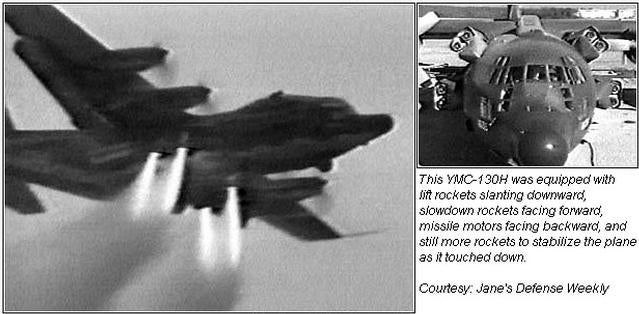
 "Rusty Vandura - www.tinyurl.com/keepoppo" (rustyvandura)
"Rusty Vandura - www.tinyurl.com/keepoppo" (rustyvandura)
08/25/2017 at 16:03, STARS: 1
They are. There was confluence on this post between your post and my particular interests. The Herk is definitely in my top 5 aircraft of any type. AF1 is unparalleled in the world as a ship of state. Even the Goblin is something that captured my curiosity as a boy. And on it goes.
 "Rusty Vandura - www.tinyurl.com/keepoppo" (rustyvandura)
"Rusty Vandura - www.tinyurl.com/keepoppo" (rustyvandura)
08/25/2017 at 16:09, STARS: 0
Only one shot; better get it right.
 "Yowen - not necessarily not spaghetti and meatballs" (yowen)
"Yowen - not necessarily not spaghetti and meatballs" (yowen)
08/29/2017 at 14:11, STARS: 1
Air Force one goes down in a farm field, hot on the president’s heels, as well as a secret service agent played by Steven Seagal are some bad dudes up to no good. Thankfully this farm field is home to a farmer played by William H Macy and he owns a crop dusting airplane, and the story of how an unsuspecting farmers crop duster becomes Executive One is born!
Movie title? “Executive One, to dust crop another day ”
 "Chariotoflove" (chariotoflove)
"Chariotoflove" (chariotoflove)
08/29/2017 at 14:25, STARS: 0
Young, ponytail Segal, or fat, bearded, comeback Segal? It makes a difference how much you’ll get for it.
 "Yowen - not necessarily not spaghetti and meatballs" (yowen)
"Yowen - not necessarily not spaghetti and meatballs" (yowen)
08/29/2017 at 14:36, STARS: 1
Fat Bearded Seagal for sure.
Who do you like for President?
 "Chariotoflove" (chariotoflove)
"Chariotoflove" (chariotoflove)
08/29/2017 at 14:45, STARS: 0
Then I think we can get it on public access cable.
Gilbert Gottfried for President. Once you hear his audition tape, you’ll agree he’s perfect:
!!! UNKNOWN CONTENT TYPE !!!
 "Yowen - not necessarily not spaghetti and meatballs" (yowen)
"Yowen - not necessarily not spaghetti and meatballs" (yowen)
08/29/2017 at 14:50, STARS: 1
I’ve heard this once before. Once was enough, lol. But I agree! Excellent choice for president.
I first learned of him when I watched the roast of Bob Saget. Bob Saget should be in this movie.
 "Chariotoflove" (chariotoflove)
"Chariotoflove" (chariotoflove)
08/29/2017 at 14:54, STARS: 0
Saget would be the head bad dude. He’s always looking for an excuse to toss expletives.